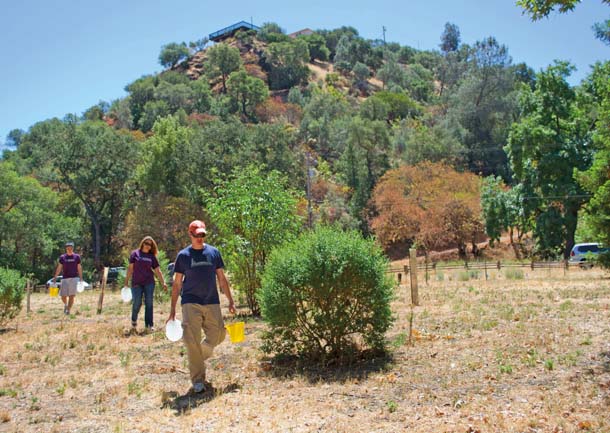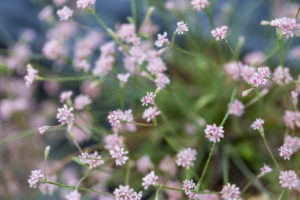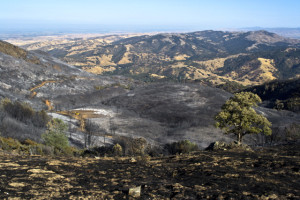On a warm autmn morning, a half-dozen volunteers are watering young native plants on a piece of land known as Marsh Creek IV, just outside Clayton. The land, on the banks of its namesake creek, is one of several properties owned by Save Mount Diablo (SMD), a Walnut Creek–based group that’s been advocating for Mount Diablo and its surroundings since 1971–and, thanks to a dedicated group of volunteers, lately getting more and more sophisticated about restoring the lands it protects.
John Gallagher, an SMD board member and head of the group’s volunteer stewardship committee, is standing beside Marsh Creek at the site of a restoration project planned by fellow board member Heath Bartosh, a professional botanist. Beyond routine maintenance, such as mowing and fence repair, the plan here is to plant long-lived natives such as valley oak, sycamore, California rose, and coyote bush. “The organization has grown enough in the last five years that in addition to some simple cleanup,” says Gallagher, “we can actually make some of these properties more valuable as open space.”
Reestablishing native plant communities and building trails will ease the burden on public agencies, such as the East Bay Regional Park District (ebrpd) and California State Parks, that will eventually own and manage these lands.
“We are buying these properties with the intent of folding them into somebody’s open space, whatever agency would be appropriate,” says Gallagher. With public agencies often strapped for funds, particularly for stewardship, Save Mount Diablo’s ability to mobilize experienced volunteers is critical. And, of course, there is no way a nonprofit or a cash-strapped agency could hope to accomplish this kind of healing of a natural landscape without hundreds of hours contributed by volunteers.
Compared to some of their other acquisitions, like nearby Irish Canyon or Thomas Ranch, both hundreds of acres, the 2.65-acre Marsh Creek parcel seemed inconsequential when SMD purchased it in 2008. But the property has great creek access and a cattle culvert that runs under Marsh Creek road, providing safe passage for wildlife.
Since 2008, SMD has purchased other nearby tracts along the creek, so what was once an isolated parcel is now part of a larger zone of preserved land, including this critical watershed corridor from Mount Diablo to the Delta.
“It’s like putting a puzzle back to-gether,” says Save Mount Diablo staffer Beryl Anderson. “When Save Mount Diablo was founded, [there was] about 7,000 acres of public land on top of the mountain. Today the puzzle consists of 110,000 acres of open space and 40 parks.”
Volunteer stewards have been a crucial part of that effort from the beginning, but here at Marsh Creek, they took the restoration work further than ever before.
Another of their recent acquisitions, the Thomas “Home” Ranch, has been the focus of various development schemes for several decades. Standing on a rise behind the ranch’s small house and several historic barns, Gallagher points to the view below: “We are only a mile from the urban limit line of Pittsburg. This is a perfect spot to put a Walmart, a Target, a Safeway, or housing. I mean, this is perfect: It’s flat and there is a major road right there.”
The land also happens to be a piece of that larger puzzle, in this case a protected corridor connecting Mount Diablo State Park to Black Diamond Mines Regional Preserve. When the property went up for public auction in 2011, a private party outbid the regional park district. Due to budget constraints and bureaucratic procedure, ebrpd was unable to offer more for the property.
That’s when SMD jumped in and paid $1.4 million. Local resident Gloria Thomas’s family owned the land for 150 years. “Gloria Thomas fought the developers,” says Gallagher. “She wanted this place preserved.”
As soon as the deal was done, the stewardship committee got to work on projects ranging from cleaning debris out of the barns to pulling trash out of a roadside creek. “The stewards put in a lot of time,” Gallagher says. “Something like 1,000 hours of work all centered right here. Soon this will all become part of the park district’s holdings.”
Learn more: savemountdiablo.org





